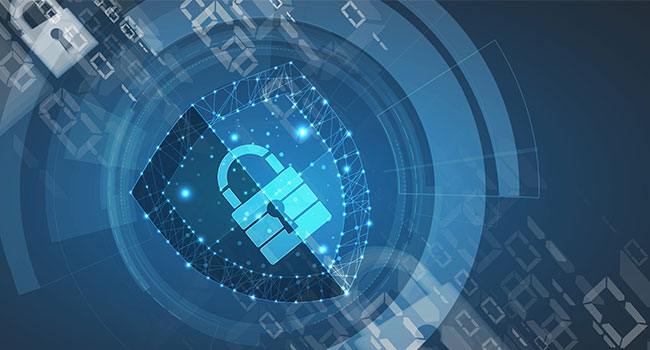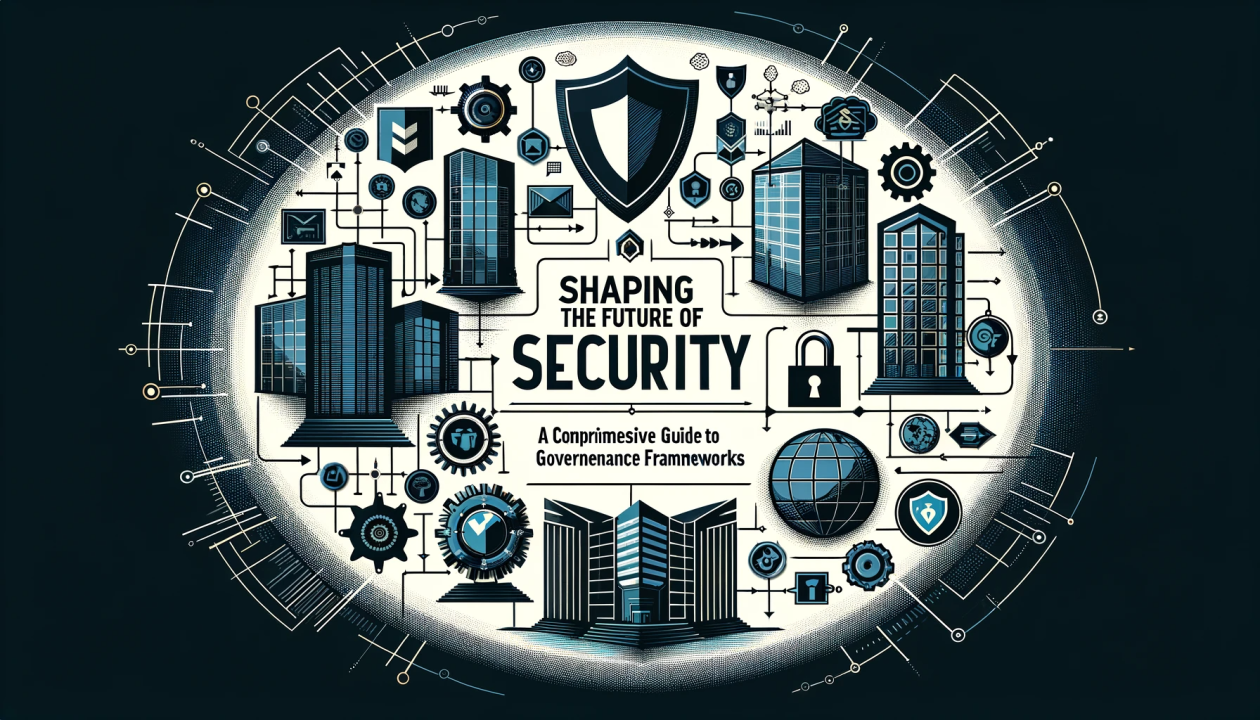Understanding Corporate Security: Proven Techniques for Company Protection
Understanding Corporate Security: Proven Techniques for Company Protection
Blog Article
From Cybersecurity to Physical Actions: Strengthening Corporate Protection in an Altering World
In today's quickly advancing digital landscape, the importance of corporate safety and security can not be overstated. As cyber hazards become increasingly advanced and prevalent, organizations have to surpass standard cybersecurity actions to safeguard their assets and operations - corporate security. This is where the integration of physical safety and security steps becomes important. By combining the toughness of both cybersecurity and physical security, business can produce a detailed defense technique that resolves the diverse series of dangers they encounter. In this conversation, we will discover the altering hazard landscape, the need to integrate cybersecurity and physical safety and security, the application of multi-factor verification steps, the relevance of employee awareness and training, and the adaptation of safety and security procedures for remote labor forces. By checking out these key areas, we will certainly get beneficial understandings into how organizations can strengthen their corporate security in an ever-changing world.
Understanding the Transforming Danger Landscape
The developing nature of the modern globe demands an extensive understanding of the altering threat landscape for efficient company security. It is vital for organizations to stay informed and adjust their safety and security gauges to deal with these evolving dangers.
One secret element of recognizing the transforming risk landscape is recognizing the different kinds of hazards that organizations encounter. Cybercriminals are regularly establishing brand-new strategies to make use of susceptabilities in computer system systems and networks. These dangers can vary from malware and ransomware strikes to phishing scams and social engineering tactics. Furthermore, physical risks such as burglary, vandalism, and business espionage continue to be common worries for companies.
Tracking and evaluating the risk landscape is vital in order to determine potential threats and susceptabilities. This includes staying upgraded on the current cybersecurity patterns, analyzing hazard knowledge reports, and performing routine risk analyses. By comprehending the changing hazard landscape, organizations can proactively implement ideal protection steps to mitigate threats and secure their properties, online reputation, and stakeholders.
Integrating Cybersecurity and Physical Security
Incorporating cybersecurity and physical protection is vital for extensive corporate security in today's interconnected and digital landscape. As organizations significantly depend on modern technology and interconnected systems, the boundaries in between physical and cyber threats are coming to be blurred. To successfully safeguard against these threats, a holistic strategy that combines both cybersecurity and physical safety measures is vital.
Cybersecurity concentrates on safeguarding electronic properties, such as data, networks, and systems, from unapproved access, interruption, and burglary. Physical protection, on the other hand, includes actions to secure physical assets, people, and centers from hazards and vulnerabilities. By integrating these 2 domain names, companies can attend to susceptabilities and risks from both electronic and physical angles, thus boosting their overall safety posture.
The integration of these two self-controls enables an extra extensive understanding of safety dangers and enables a unified feedback to events. Physical access controls can be boosted by integrating them with cybersecurity procedures, such as two-factor authentication or biometric recognition. In a similar way, cybersecurity measures can be matched by physical safety actions, such as security cameras, alarms, and protected gain access to factors.

Applying Multi-Factor Authentication Procedures
As companies progressively focus on comprehensive safety and security actions, one effective method is the execution of multi-factor verification measures. Multi-factor authentication (MFA) is a protection method that needs individuals to give multiple forms of identification to access a system or application. This strategy includes an extra layer of protection by integrating something the individual recognizes, such as a password, with something they have, like a finger print or a security token.
By carrying out MFA, organizations can considerably improve their safety pose - corporate security. Typical password-based verification has its constraints, as passwords can be conveniently endangered or forgotten. MFA mitigates these threats by including an added verification variable, making Click This Link it extra hard for unapproved people to obtain accessibility to sensitive info
There are a number of sorts of multi-factor authentication methods readily available, consisting of biometric verification, SMS-based confirmation codes, and hardware tokens. Organizations need to assess their particular requirements and select one of the most proper MFA service for their demands.
However, the implementation of MFA must be carefully prepared and carried out. It is important to strike an equilibrium between safety and security and usability to stop individual irritation and resistance. Organizations must likewise consider possible compatibility concerns and offer appropriate training and assistance to make certain a smooth change.
Enhancing Worker Awareness and Training
To strengthen business safety and security, companies have to prioritize enhancing staff member recognition and training. Numerous security go to this site violations take place due to human error or lack of understanding.
Efficient employee awareness and training programs need to cover a vast array of subjects, including information protection, phishing attacks, social engineering, password hygiene, and physical protection actions. These programs need to be tailored to the specific needs and duties of different staff member duties within the organization. Regular training sessions, simulations, and workshops can assist staff members create the required abilities and expertise to respond and identify to security threats effectively.
In addition, companies ought to urge a culture of safety understanding and provide recurring updates and tips to keep staff members informed concerning the most up to date threats and reduction techniques. This can be done via interior interaction channels, such as e-newsletters, intranet websites, and e-mail campaigns. By fostering a security-conscious workforce, companies can dramatically decrease the chance of safety cases and safeguard their beneficial possessions from unapproved access or concession.

Adapting Protection Actions for Remote Labor Force
Adjusting business protection actions to accommodate a remote workforce is vital in making sure the defense of delicate details and properties (corporate security). With the increasing trend of remote work, organizations must carry out proper safety procedures to mitigate the risks related to this brand-new means of functioning
One crucial aspect of adapting security actions for remote job is developing safe and secure interaction networks. Encrypted messaging platforms and digital exclusive networks (VPNs) can aid secure delicate info and avoid unauthorized access. In addition, companies must implement using solid passwords and multi-factor verification to enhance the safety and security of remote access.
An additional their website crucial consideration is the implementation of secure remote accessibility options. This involves providing staff members with protected access to company resources and data via online desktop computer facilities (VDI), remote desktop methods (RDP), or cloud-based options. These technologies make certain that delicate information stays protected while making it possible for workers to perform their duties effectively.

Last but not least, comprehensive safety and security understanding training is vital for remote employees. Training sessions ought to cover finest methods for safely accessing and taking care of delicate details, identifying and reporting phishing attempts, and maintaining the overall cybersecurity hygiene.
Conclusion
In conclusion, as the threat landscape proceeds to develop, it is critical for companies to reinforce their security determines both in the cyber and physical domain names. Integrating cybersecurity and physical security, applying multi-factor verification steps, and enhancing worker awareness and training are essential actions towards attaining robust company safety and security.
In this conversation, we will discover the altering hazard landscape, the requirement to incorporate cybersecurity and physical safety, the implementation of multi-factor verification measures, the value of employee recognition and training, and the adaptation of safety steps for remote labor forces. Cybersecurity steps can be enhanced by physical safety and security procedures, such as surveillance cams, alarm systems, and protected accessibility factors.
As organizations significantly prioritize extensive protection measures, one efficient strategy is the implementation of multi-factor authentication procedures.In verdict, as the danger landscape proceeds to evolve, it is vital for companies to strengthen their safety and security determines both in the cyber and physical domain names. Incorporating cybersecurity and physical security, implementing multi-factor authentication procedures, and boosting staff member recognition and training are important steps towards accomplishing durable company protection.
Report this page